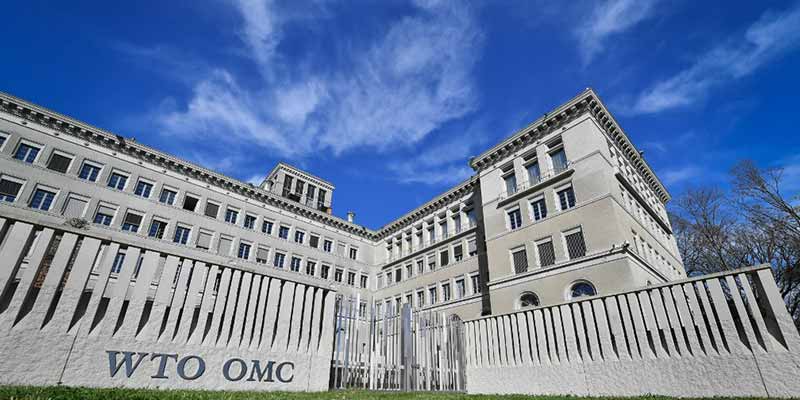- World
- Sep 18
Explainer / Types of WTO safeguards
• Commerce and Industry Minister Piyush Goyal addressed the G-33 Virtual Informal Ministerial Meeting.
• It was organised by Indonesia on September 16 to discuss the agricultural priority issues of G-33 and the way forward for the 12th Ministerial Conference of the World Trade Organisation (WTO), scheduled to be held from November 30 to December 3 this year.
• Out of a total of 47 G-33 members, representatives from 21 countries, including India, took the floor to make the brief intervention.
What is G-33?
• The G-33 is a grouping of 47 developing countries having common objectives and similar concerns. It has been at the forefront in taking forward issues affecting food security and livelihood of farmers.
• It is a coalition pressing for flexibility for developing countries to undertake limited market opening in agriculture
• It is also called “Friends of Special Products” in agriculture.
Key points raised by Goyal:
• The Agreement on Agriculture at the WTO was riddled with deep imbalances, which favour the developed countries and have tilted the rules against many developing countries, Goyal said.
• He said that historical asymmetries and imbalances must be corrected to ensure a rule-based, fair and equitable order.
• The minister said G-33 must strive for positive outcomes on a permanent solution to public stockholding for food security purposes, which is of utmost importance, finalisation of a special safeguard mechanism (SSM) quickly and a balanced outcome on domestic support.
• He urged the members to work collectively to retain the cohesion of the G-33 coalition and strengthen it further by reaching out to other like-minded developing groups to secure their support for a fair, balanced and development-centric outcome on agriculture at the 12th conference in Geneva.
• The meeting concluded with the adoption of the G-33 joint ministerial statement reaffirming commitment for expeditious resolution of the WTO's mandated issues in agriculture.
What is SSM?
• At the 2015 Nairobi Ministerial Conference, WTO members adopted a decision to negotiate a Special Safeguard Mechanism (SSM) for developing countries in dedicated sessions of the Agriculture Committee in Special Session. Under this decision, the General Council will regularly review the committee's progress.
• The SSM would allow developing countries to temporarily increase tariffs on agriculture products in cases of import surges or price declines.
• This contingency measure is imposition of tariff if the import surge causes welfare loss to the domestic poor farmers. The design and use of the SSM is an area of conflict under the WTO.
• This is distinct from the Special Agricultural Safeguard (SSG) that is provided for in Article 5 of the Agreement on Agriculture, and is available to many developed countries.
The WTO
• The World Trade Organisation (WTO) is the only global international organisation
dealing with the rules of trade between nations. At its heart are the WTO agreements, negotiated and signed by the bulk of the world’s trading nations and ratified in their parliaments. The goal is to ensure that trade flows as smoothly, predictably and freely as possible.
• The WTO has over 160 members representing 98 per cent of world trade. Over 20 countries are seeking to join the WTO.
• India has been a WTO member since January 1, 1995.
Three types of safeguards for WTO members
• Safeguards are contingency restrictions on imports taken temporarily to deal with special circumstances, such as a surge in imports.
• It is aimed to protect a specific domestic industry from an increase in imports of any product which is causing, or which is threatening to cause, serious injury to the industry.
• They normally come under the Safeguards Agreement, but the present Agriculture Agreement has a special provision (Article 5), the Special Agricultural Safeguard (SSG).
• The proposed Special Safeguard Mechanism, or SSM, would be a third type of safeguard.
1) GATT safeguard
• Article 19 of the General Agreement on Tariffs and Trade (GATT) and the WTO’s Safeguards Agreement apply to all products, including agricultural products.
• The Safeguards Agreement allows temporary action to restrict imports of a product if the country’s domestic industry is injured or threatened with injury as a result of a surge in imports (accompanied by a price fall, but not a price fall on its own).
• The restriction/remedy under the general safeguard can be quantitative (such as a quota) or an increase in tariffs above the bound rate. The use of safeguard measures requires a prior investigative process, including test of injury, and negotiations for compensation.
2) Special Agricultural Safeguard (SSG)
• The Special Agricultural Safeguard (SSG) is provided for in Article 5 of the Agriculture Agreement. The safeguard raises tariffs.
• It can be triggered by import surges or price falls, virtually automatically, i.e., without any need to test injury or to negotiate compensation.
• They can only be used if the government reserved the right to do so in its lists or “schedules” of commitments on agriculture. Imports under tariff quota commitments are exempted from the SSG.
3) Special Safeguard Mechanism (SSM)
• The SSM would be available for developing countries only to address import surges or price falls.
• Like the SSG, it could be triggered if the import surge or price fall is big enough, without any need to test injury or to negotiate.
• More details of the mechanism are being negotiated.
Manorama Yearbook app is now available on Google Play Store and iOS App Store


